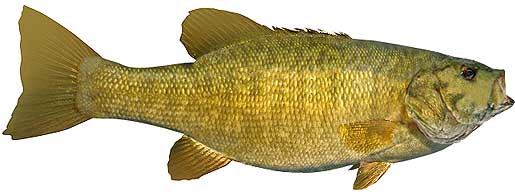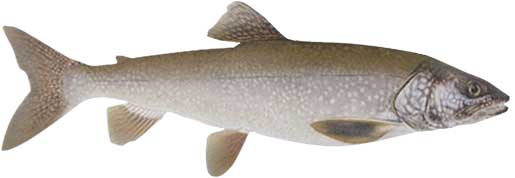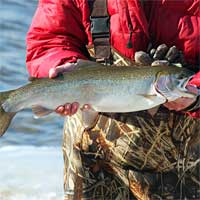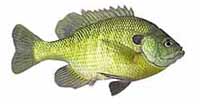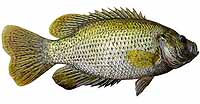Fishing Report For Newfound Lake, NH
By Rick Seaman
Last updated on .
Fishing Reports
Popular Fish Species Newfound Lake, NH
Smallmouth Bass
Current Report: Fair
The water in Newfound Lake is gin clear, and offers some exceptional fishing for smallmouth bass.
FALL. Fall is in full swing and smallmouth have followed schools of baitfish into coves and bays 12to 25 feet deep. They thrive in the cold, clean water, which is an ideal environment for them. Locals report that tube jigs are a great choice when the bass are around 15 feet deep. Drop shot rigs with small worms or shad shaped plastics are also popular in 10' water or deeper. Jerkbaits, deep-diving crankbaits, and slow-rolled spinnerbaits, are also successful, when bass are shallow to mid depth. Later in Fall, smallies move to slightly deeper water, around 30 feet deep. Fishing shallow for smallmouth is often good on cold, windy, cloudy and rainy days.
WINTER. Winter will isolate them around deeper structure, points, flats and creek channels, often suspending in open water above these features. They can generally be found from 15 to 40 feet deep. Jigging spoons, tube baits, drop-shot worms, jigs and Ned rigs tend to temp smallmouth in deep water. I like to work these deeper haunts very slowly in Winter, as the bass are somewhat sluggish. Here they hold, feeding less frequently, awaiting warmer water to return in Spring.
SPRING. In Spring, anglers are catching lots of 3 and 4 pound smallmouth. Topwater and crankbaits early in the morning and late in the day are both catching nice fish. After ice out, when water temperatures rise into the 50's, smallmouth move from deep wintering spots to shallower water, just outside spawning areas. They feed heavily in 3 to 12 feet of water at this time, and are typically caught on jerkbaits, crankbaits, tube baits, Ned rigs, and crayfish imitating plastics. Once water warms into the high 50's, they move into shallower water, and create nests in gravel or sand areas, then lay their eggs. Females then move to deeper water and males remain to guard the eggs, and then the fry. After a couple weeks, the males also move into 15 to 20 feet deep, and feed aggressively. Crankbaits, tube baits, Ned rigs, plastic worms, spoons and swimbaits are catching smallies during this period.
SUMMER. Locals report tough fishing during summer. For those who wish to pursue smallies in Summer, good electronics and a drop-shot rig are a good way to go. Smallmouth bass are currently feeding shallow early and late in the day in 8 to 15 feet of water. They are being caught on topwater, crankbaits, swimbaits, Ned rigs and tube baits. Smallmouth bass here feed on crawfish, gizzard shad, and small sunfish. They prefer rocky or gravel bottom areas, as this is where crayfish live. During the hotter parts of the day, they are being caught on points, humps, and ledges around 20 to 30 feet deep. Often these deeper fish tend to school, so finding them can deliver some fast action. Anglers fishing around the sections of the lake nearby the Wellington area, near Mayhew, and around the Cliff Islands, are reporting good catches.
Lake Trout
Current Report: Good
Lake trout feed on small fish and baitfish. Rainbow smelt are the food source of choice for lake trout, so lures imitating rainbow smelt, baitfish, sunfish or small trout are good choices.
FALL. The season for lake Trout January 1st to September 30th, so the season is currently closed. Reports of lake trout in the range of 15 to 20 pounds, come often enough to peak the interest of anglers.
WINTER. Favoring water temperatures in the 40's, lake trout find areas to their liking in 30 to 120 feet of water, and tend to stay there throughout the cold months. Learning these areas before the lake ices over can get you into some of the better area for ice fishing. Patient anglers willing to work slowly are catching some nice lake limits through the ice. After ice out, trolling with leaded line or downriggers, or vertical jigging with spoons and jigs, completes the cold-water season in 80 to 100 feet of water, or deeper.
SPRING. Prime laker fishing season is during Spring. Spring weather will find lake trout, along with baitfish, into 10 to 30 feet of water. Early Spring is a prime time to catch big lakers. Lakers are caught in areas of the lake which have deep water next to shallower, feeding spots. Jigs and heavy spoons are catching the majority of these big lakers. Later in Spring they typically drop into 30 to 50 feet of water. Trolling with spoons, brightly-colored jerkbaits, and spinners with a variety of rigging methods to get these lures to run deep. For big lakers, use larger baits.
SUMMER. Summer heat drives lake trout deeper, generally below the thermocline in 40 to 120 feet deep, generally below the thermocline. Early and late in the day, lakers may feed as shallow as 10 feet deep. Generally, lake trout prefer to stay deep, near the thermocline throughout Summer. They look for depth variations like ditches, channels, humps and ledges, but are being caught in the deeper water around this structure. Heavy spoons and jigs, as well as very slow trolling, with leaded line or downriggers, produce many of the lakers being caught during Summer. In late summer concentrate on 25 to 45 feet of water.
Landlocked Atlantic Salmon
Current Report: Good
Newfound Lake is one of 15 lakes in the state with landlocked Atlantic salmon. The New Hampshire Fish and Game Department reports these big salmon generally hang out in 40 feet or deeper, staying below the thermocline. Live bait, including smelt, shiners and nightcrawlers are popular here and can be slow trolled, or cast and retrieved.
FALL. Cooling water temperatures have brought salmon back near the surface and closer to shore, in 15 to 35 feet. They are naturally drawn to the vicinity of inlets or outlets, where they prepare to spawn, generally from the middle of October to late November. They create nests in shallow gravel, where they lay their eggs. Fly fishing, or casting flatfish, spinners, jerkbaits and spoons is popular and effective during these shallow-water periods. Later in the season they move to around 30 to 60 feet deep.
WINTER. In Winter, landlocked salmon here are typically caught in 40 feet deep, and deeper. After ice out, they drop into 40 to 120 feet deep, following channel and structure contours. Jigging spoons, colorful ice jigs, or live bait catches the majority of these salmon while ice fishing here.
SPRING. Once ice-out is complete in Spring, landlocked salmon become more active and feed in 10 to 50 feet of water, often near the shoreline. At this time they begin moving to inflowing tributaries as they prepare to spawn. After spawning they begin moving to deeper water. Trolling shallow with spinners, flatfish and super dupers is the most popular method for catching them during Spring.
SUMMER. Anglers most often target landlocked salmon by trolling open water. During the warm Summer months, salmon migrate to deeper, cooler water, usually between 40 and 80 feet deep, often as deep as 120 feet. Trolling with lead core line or downriggers allows for use of most lures and bait at these depths. They forage on a variety of prey, including alewives, smelt other baitfish.
Fishing Video
Fish species to fish for...
Guide to fishing for smallmouth bass, rainbow trout, lake trout, bluegill, rock bass, Atlantic salmon and chain pickerel at Newfound Lake in New Hampshire.
 Newfound Lake is a 4,100-acre lake with 20 miles of shoreline. One of the best lake trout, and landlocked salmon, fisheries in the state, it is filled via clear, cold water from underground springs. The lake is home to smallmouth bass, largemouth bass, rainbow trout, brown trout, lake trout, pickerel, Atlantic salmon, and white perch.
Newfound Lake is a 4,100-acre lake with 20 miles of shoreline. One of the best lake trout, and landlocked salmon, fisheries in the state, it is filled via clear, cold water from underground springs. The lake is home to smallmouth bass, largemouth bass, rainbow trout, brown trout, lake trout, pickerel, Atlantic salmon, and white perch.
Primary fish species to catch
Today's Weather & Forecast
Fishing Boat Rentals
Click here for fishing boat rentals.
Public Boat Launch Ramps & Landings
Click here for boat ramps.
Marinas
Click here for marinas.
Fishing License
Click here for a New Hampshire Fishing License.
Map - Fishing & Access
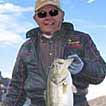 Rick Seaman is a fishing enthusiast with over five decades of fishing experience, a retired tournament fisherman, author of numerous published articles on fishing, and co-author of the book "Bass Fishing - It's not WHAT you throw, It's WHERE you throw it".
Rick Seaman is a fishing enthusiast with over five decades of fishing experience, a retired tournament fisherman, author of numerous published articles on fishing, and co-author of the book "Bass Fishing - It's not WHAT you throw, It's WHERE you throw it".
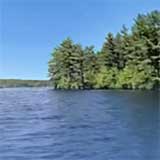 Contact Information
Contact Information
Wellington State Park
614 W Shore Rd
Bristol, NH 03222
603 744-2197
Fishing lakes in each state
110325
Newfound Lake, NH Report
NEW HAMPSHIRE


Fishing for Atlantic salmon and trout in central NH.



